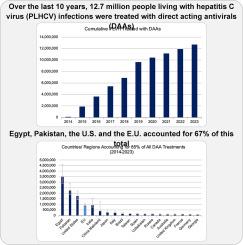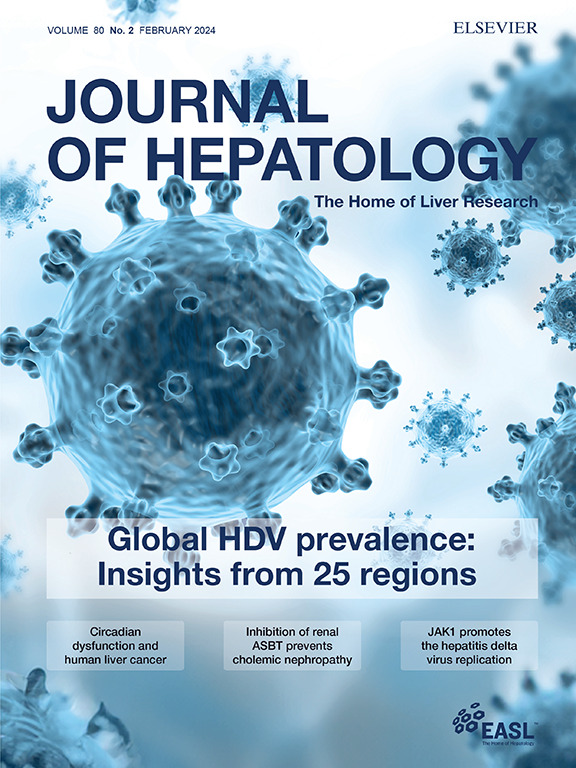Number of people treated for hepatitis C virus infection in 2014-2023 and applicable lessons for new HBV and HDV therapies
IF 26.8
1区 医学
Q1 GASTROENTEROLOGY & HEPATOLOGY
引用次数: 0
Abstract
Background and aims
The year 2023 marked the 10-year anniversary of the launch of direct-acting antivirals (DAAs) for the treatment of the hepatitis C virus (HCV). HCV treatment trends by country, region, and globally are important to monitor progress toward the World Health Organization’s 2030 elimination targets. Additionally, the historical patterns can help predict the treatment uptake for future therapies for other liver diseases.Methods
The number of people living with HCV (PLHCV) treated between 2014–2023 across 119 countries was estimated using national HCV registries, reported DAA sales data, pharmaceutical companies’ reports, and estimates provided by national experts. For the countries with no available data, the average estimate of the corresponding Global Burden of Disease region was used.Results
An estimated 13,816,000 (95% uncertainty intervals (UI): 13,221,000–16,415,000) PLHCV were treated, of whom 12,748,000 (12,226,000–15,231,000) were treated with DAAs, of which 11,081,000 (10,542,000–13,338,000) were sofosbuvir-based DAA regimens. Country-level data accounted for 97% of these estimates. In high-income countries, there was a 41% drop in treatment from its peak, and reimbursement was a large predictor of treatment. In low- and middle-income countries, price played an important role in expanding treatment access through the public and private markets, and treatment continues to increase slowly after a sharp drop at the end of the Egyptian national program.Conclusions
In the last 10 years, 21% of all HCV infections were treated with DAAs. Regional and temporal variations highlight the importance of active screening strategies. Without program enhancements, the number of treated PLHCV stalled in every country/region which may not reflect a lower prevalence but may instead reflect the diminishing returns of the existing strategies.Impact and implications
Long-term hepatitis C virus (HCV) infection can lead to cirrhosis and liver cancer. Since 2014, these infections can be effectively treated with 8-12 weeks of oral therapies. In 2015, the World Health Organization (WHO) established targets to eliminate HCV by 2030, which included treatment targets for member countries. The current study examines HCV treatment patterns across 119 countries and regions from 2014 to 2023 to assess the impact of national programs. This study can assist physicians and policymakers in understanding treatment patterns within similar regions or income groups and in utilizing historical data to refine their strategies in the future.

求助全文
约1分钟内获得全文
求助全文
来源期刊

Journal of Hepatology
医学-胃肠肝病学
CiteScore
46.10
自引率
4.30%
发文量
2325
审稿时长
30 days
期刊介绍:
The Journal of Hepatology is the official publication of the European Association for the Study of the Liver (EASL). It is dedicated to presenting clinical and basic research in the field of hepatology through original papers, reviews, case reports, and letters to the Editor. The Journal is published in English and may consider supplements that pass an editorial review.
 求助内容:
求助内容: 应助结果提醒方式:
应助结果提醒方式:


